[‘Peacock Chair’ (1947) by Hans J Wegner]
We tagged a few days in Copenhagen onto our itinerary after saying goodbye to Tom, Zoë and squidgy, smily Theo, who are now settled in Stockholm. We took the train - do not even get me started on Scandinavian railways and metro systems which actually work and do not cost a fortune - and went over the Øresund Bridge from Malmö to Copenhagen.
I haven’t watched The Bridge, but know about the premise and the knitwear, and I genuinely thought it simply went over the Øresund, so when I googled it and saw that it disappears under water towards the Danish side, looking like some sort of enormous skate, I thought the image had been manipulated. But no, it really is that strange. And thrilling.
But this is not the point of today’s newsletter. Chairs are.
Now I know very little about chairs, chair designs and chair designers but, to use the phrase which I heard so many times when I was running wine tastings, “I know what I like”. And, as with wine, it’s too easy to just stick with what you know and look no further. With chairs it’s not too difficult: for me they just need to be nice to look at, practical, and comfortable to sit on.
[the Wunderkammer of chairs]
But this ultra-simplistic approach was tested in the amazing Design Museum, housed in an old hospital which works brilliantly as a walk through its exhibitions and displays of Danish design. (There’s also a beautiful library with Arne Jacobsen lampshades and anyone can use it for free - can confirm there are very good knitting and weaving sections.) It has a corridor or ‘Wunderkammer’ of chairs, a collection of about 100 iconic - I know, overused word, but this time it’s the right one - designs, most of which are Danish because in the C20 the Danes did chairs quite superbly. When I say chairs, in this context I mean mostly those made of wood with simple shapes, ergonomic curves, witty touches (and names), and maybe cane or paper cord seating.
[Hans J Wegner and his Wishbone Chair des. 1949]
Like Hans J Wegner’s ‘Y’ or ‘Wishbone Chair’ which is still in production. Or his ‘Peacock Chair’, or Arne Jacobsen’s ‘Swan’, or Alvar Aalto’s ‘Ant’. As list of chair greats along the corridor went on and on, I was fascinated by this whole new world of creativity and comfort (or not), and for the first time realised just how difficult it must be to design a really, really good chair. When you emerge from this part, you find that the museum’s cafe has two each of many of the designs in the Wunderkammer; we dithered, like Goldilocks, about which ones to sit on. We tried several, but it had to be the Wishbone. And very comfortable it is, too. Perfect with a coffee and a fastelavnsbolle (Lent bun) and a review of all the uncomfortable chairs we have ever sat on (school, assembly halls, waiting rooms, holiday houses, offices, the list is endless).
[‘Interior with the Painter’s Daughter, Helga, Sewing’ (1890) by Anna Ancher]
It made me think about the representations of chairs in art which have previously passed me by. You can see the Danish design heritage in paintings by Anna Ancher,
[‘Hvile’ or ‘Rest’ (1905) by Vilhelm Hammershøi - interesting take on it here]
and in quite a few paintings by Hammershøi, both of whom, interestingly, use the backs of the relatively plain chairs in rear views of quiet female subjects who thus appear unobserved and unselfconscious.
[‘Interior, The Red Chair’ (1920s) FCB Cadell]
One of the most hardworking chairs in art - apart from Van Gogh’s Chair which may very well have influenced him - must be the red (more vermilion, I’d say) chair belonging to FCB Cadell, one of the Scottish Colourists. It is very ordinary, very plain, very angular, but also startlingly, unusually bright. It appears in several paintings, sometimes with a brilliantly coloured piece of clothing such as a shawl draped over it. Cadell’s palette is fabulously intense and transforms a totally unremarkable piece of furniture into something with a personality of its own which we cannot ignore. Needless to say, I am a huge fan of the Scottish Colourists.
[Clothes on a Chair (Morning)’ (2023) Florence Hutchings]
I’ve also come across many paintings in which the artist has used a chair as the support for a still life. Nice, but who actually puts artful arrangements of textiles and flowers on chairs? A basket maybe, or a plate of pears by Matisse, but they are far more likely to have clothes flung on them when we can’t be bothered to hang them up or put them away. This is why I like Florence Hutchings’ office chair paintings so much: yes, they are in the still-life tradition, but also in the real-life tradition. (I just love her work, and her large-scale, gloriously wonky, often collaged, strangely angled representations of domestic stuff such as shoe racks, pantries, hat racks, tables - look at the catalogue here).
[‘Afternoon Tea’ [2020] by Florence Hutchings]
She also captures the joy of curvy, rococo, almost anthropomorphic chairs which are more playful versions of Cadell’s red chair.
All this thinking about chairs led me to discover that there is also a whole world of chair-spotting in films. While genre and domestic paintings tend to include anonymous, quotidian chairs, set designers go all out with iconic, famous, futuristic, plastic and leather ones (examples here and here), many of which are in the groovy 60s and 70s sections of the Design Museum.
[cafe in ‘Amélie’ (2001)]
Yet one of the most effective chairs in the cinema is the late C19 Austrian Thonet No 18 bentwood chair, the chair of the Parisian cafes in Amélie, the Berlin nightclub in Cabaret (it stars in the great dance scene), and the jazz club in La La Land.
In Shadow of a Doubt (1943) Hitchcock manages to make Thonet chairs cast unnerving shadows, like nooses. As Charlie leaves the library having realised the truth about her uncle, real shadows appear, mirroring the metaphorical shadows in her mind. It’s one of his best films; I rewatched it recently and got sweaty palms all over again.
[1962 ‘Chair Session’ in a Hamburg studio, photographed by Astrid Kirchherr]
Of course, the Beatles sprawl, lounge, balance, pose, joke on all sorts of chairs for photographers, but the choice of a Thonet or Thonet-style chair for John Lennon is inspired. It’s apparently stripped back and simple, but also convoluted and complex with an almost angelic halo, but you know that despite the very formal, adult pose (“I’ve been expecting you, Mr Bond”), at any moment both the chair and the man could start rocking.
Finally, how best to acknowledge the fact recognised by the Copenhagen Design Museum that chairs often transcend their functional roles? Chairs can be artfully arranged round a table to create an ensemble, or carefully placed as in Kettle’s Yard where visitors are allowed to sit on them, but it may be even better to store them on a wall, Amish-style. It’s a practical space-saving solution but also presents chairs as beautiful, sculptural objects made with good, natural materials.
First, though, I need my own personal mini Wunderkammer of Danish chairs. Just half a dozen to get me started would be fine.
Happy Sunday!
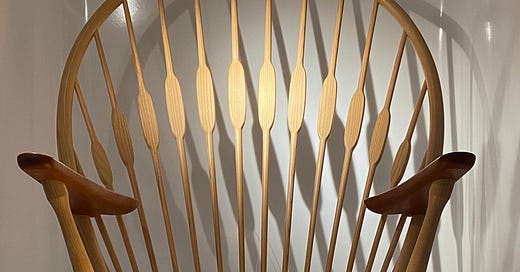




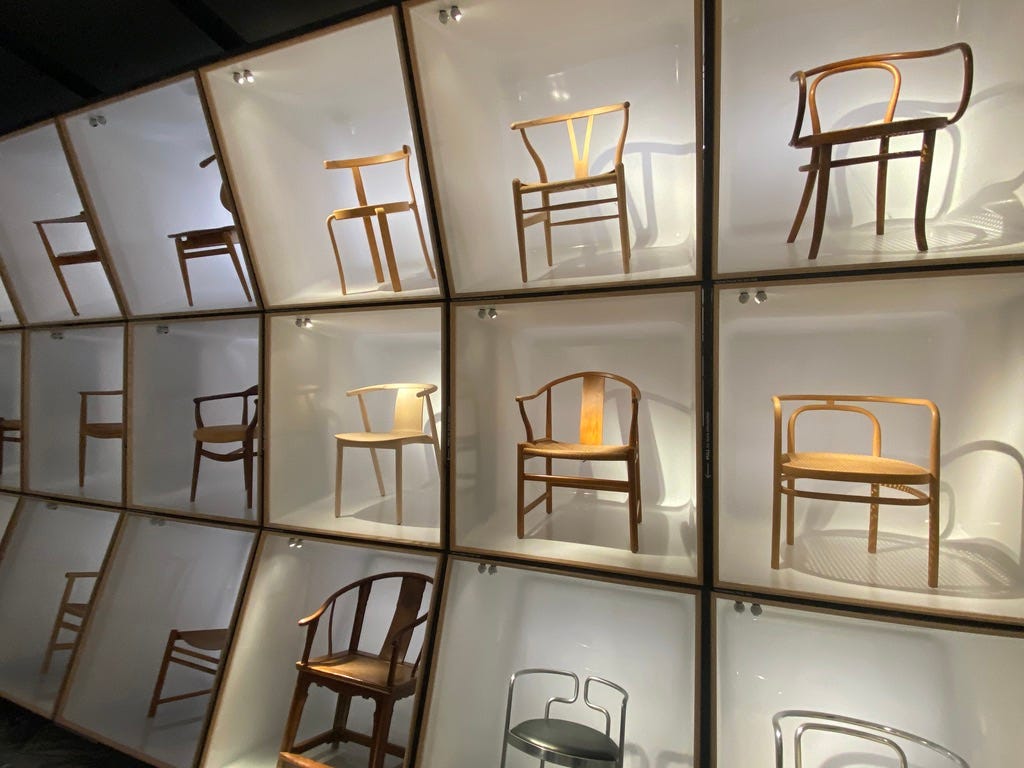
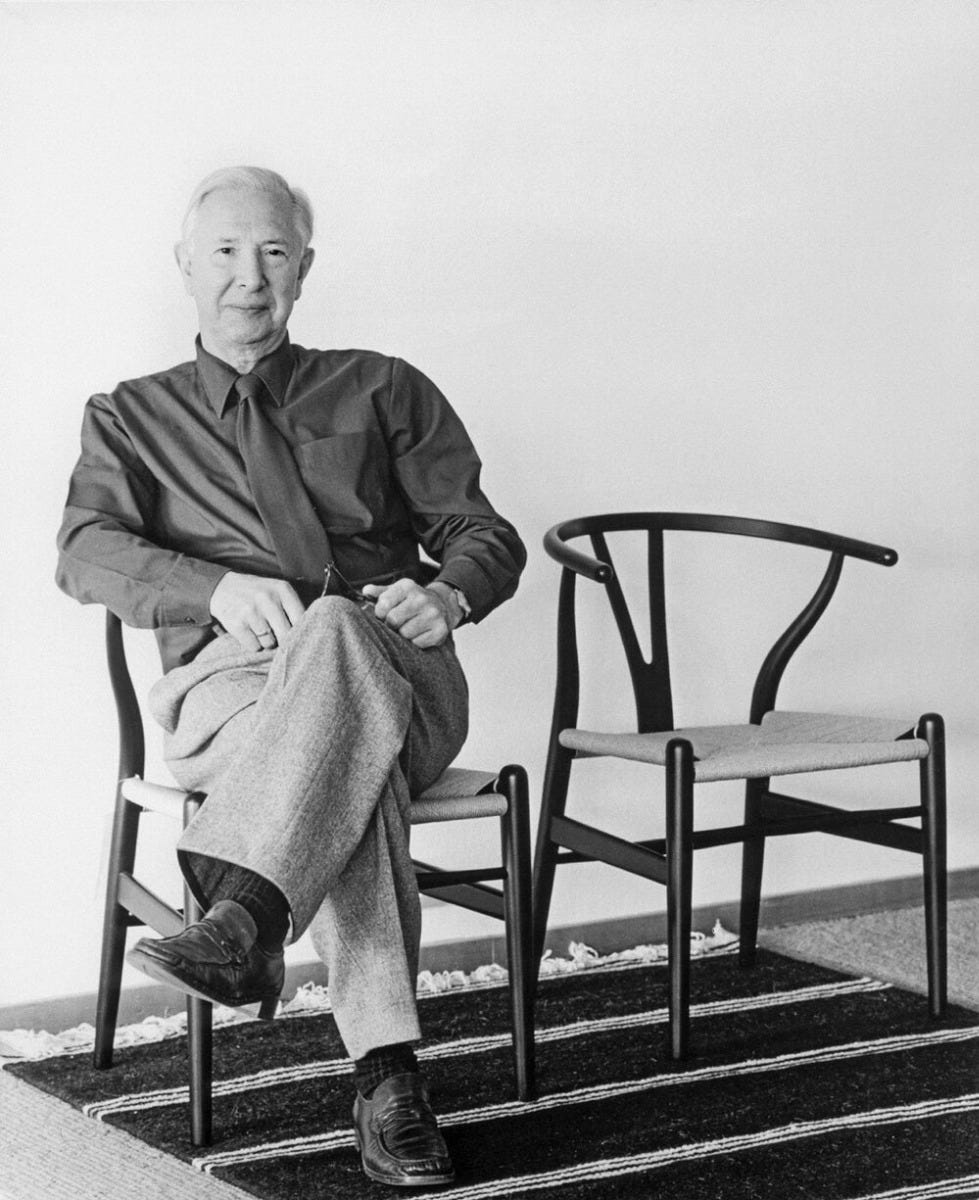
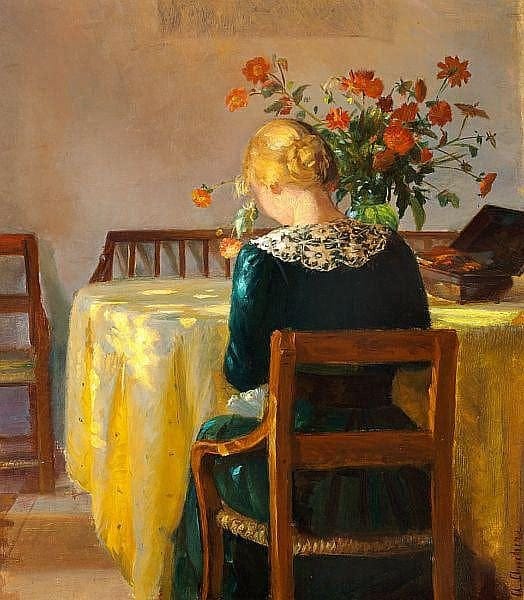
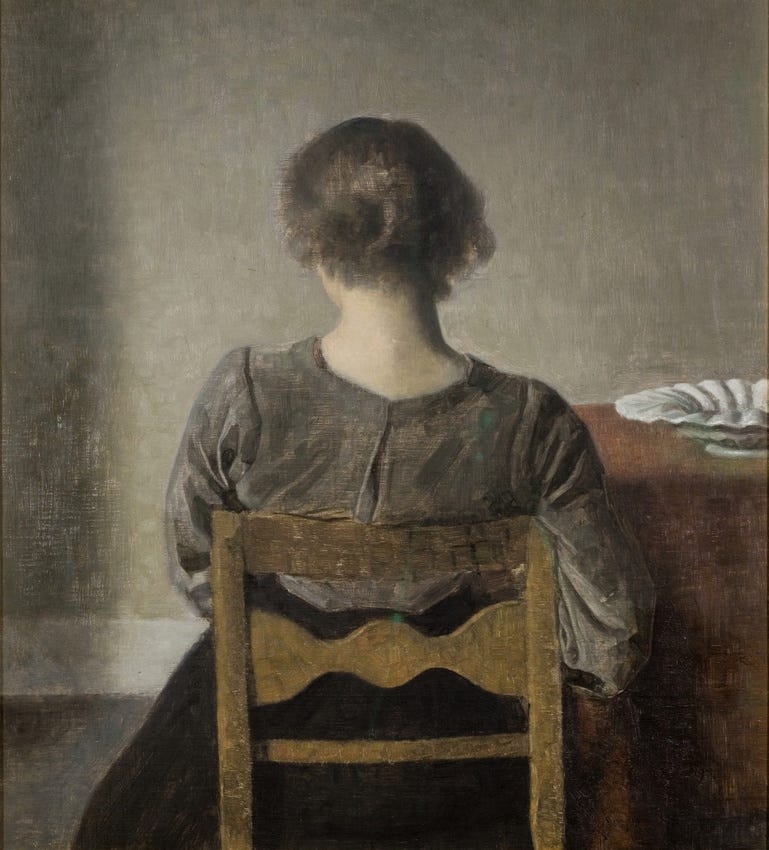





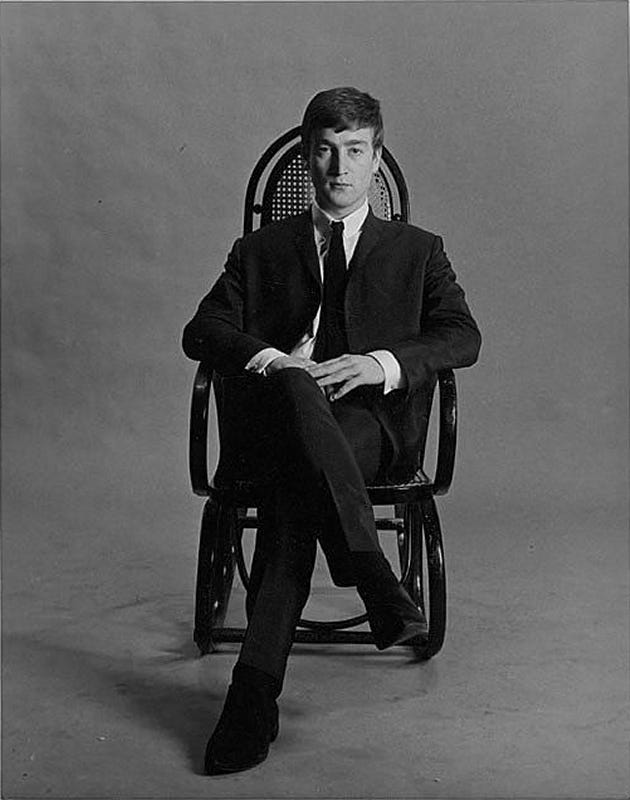
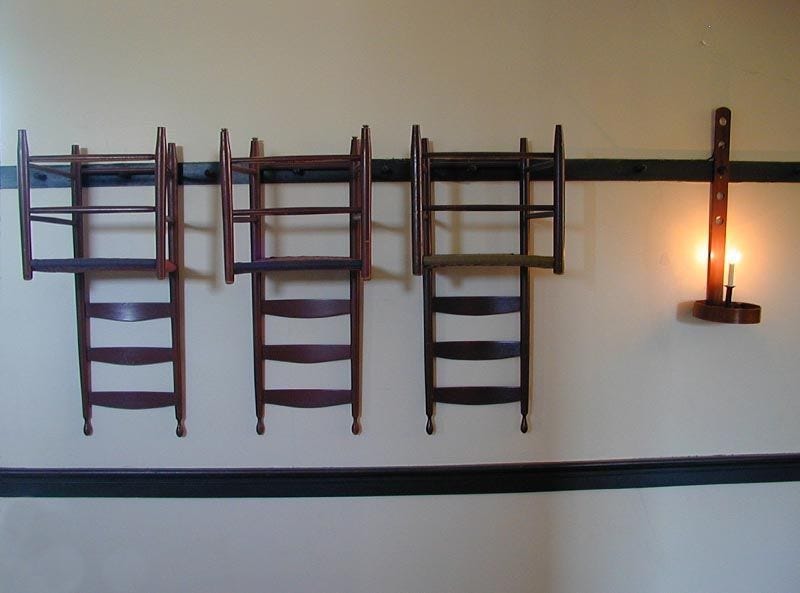
If you love the Scottish Colourists - it's Edinburgh for you. A large exhibition has just opened at Dovecot Studios of their work. https://dovecotstudios.com/whats-on/the-scottish-colourists
Another glorious post, Jane. You always take us somewhere unexpected!